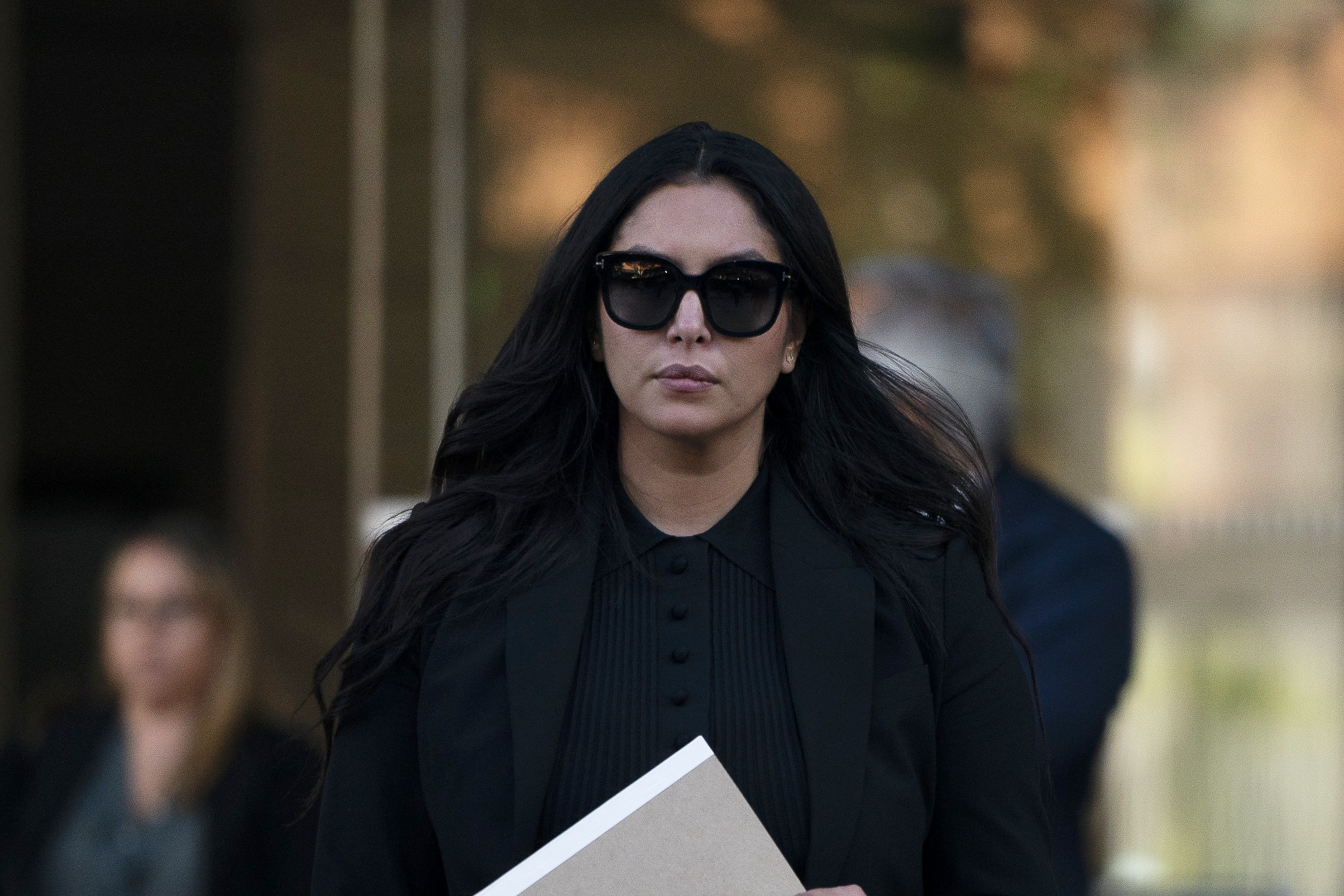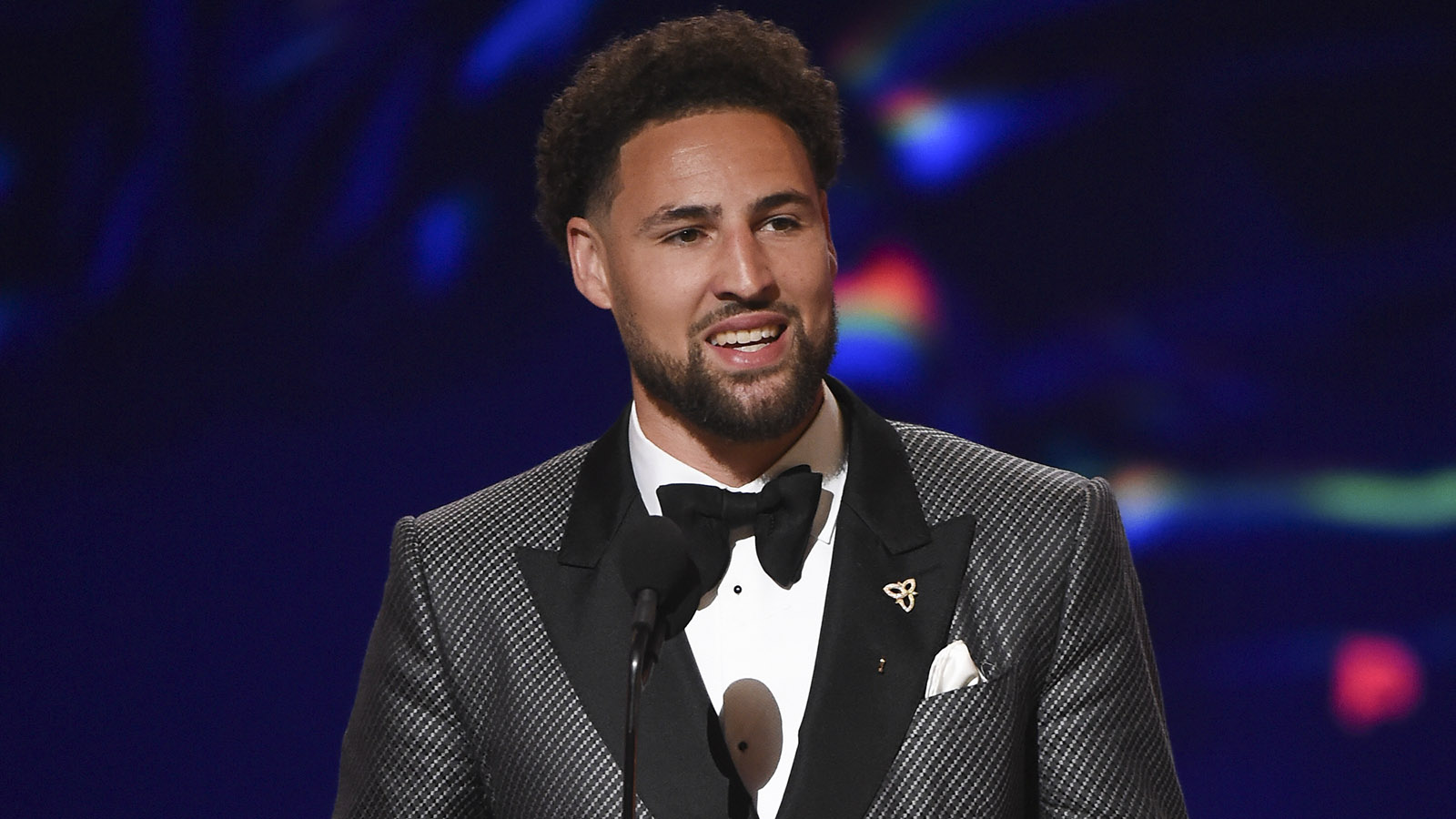A retired Los Angeles County fire captain accused of taking multiple photographs of human remains at the scene of the helicopter crash that killed Kobe Bryant and eight others and then sending the images to at least one other employee testified Monday that he was ordered to take pictures of the scene and “cover up" the remains of a particular victim.
In awkward testimony that ranged from conflicted to hostile, Brian Jordan said he had little memory of the day or of seeing horrific scenes that “are gonna haunt me forever.''
Jordan was called to the stand in the federal civil trial of a lawsuit brought by the Lakers star's widow and another family. Vanessa Bryant and Irvine financial advisor Chris Chester are suing the county for unspecified millions of dollars for negligence and invasion of privacy over the photos. Her husband and 13-year-old daughter Gianna, and Chester's wife, Sarah, and 13-year-old daughter Payton were among the nine people killed in the crash.
Jordan was criticized by the Los Angeles County Fire Department after it determined his photographs from the crash scene had “no legitimate business purpose'' and “only served to appeal to baser instincts and desires for what amounted to visual gossip,'' according to court records.
Get top local stories in Connecticut delivered to you every morning. >Sign up for NBC Connecticut's News Headlines newsletter.
Before he could be terminated from his job, Jordan retired early in 2021, citing his mental health, court papers show. Steven Haney, Jordan's attorney, wrote in a filing that his client was “simply obeying orders'' when he snapped the photos at the scene of the Jan. 26, 2020, crash.
Jordan was clearly troubled when he appeared in the seventh-floor courtroom where the trial has been playing out since last Wednesday. The former safety officer had trouble answering questions and carried on asides with U.S. District Judge John Walter, who at one point advised the witness to “hang in there'' and “do the best you can.''
He answered multiple times that he did not remember such things as whether he used his personal cell phone or a county-issued device to snap photos, what he might have taken pictures of, or even if he had been at the crash scene at all.
When an attorney for Chester described the catastrophic injuries suffered by his client's wife in an attempt to jar Jordan's memories, the witness snapped: “Excuse me, I need to take another break,'' and quickly walked off the stand and out of Walter's courtroom.
When he returned, Jordan told jurors that he was “ordered" by a superior officer to go to the accident site, take photos, “and cover up a particular person," meaning the remains of Bryant.
“I was there, (but) I do not remember being there,'' he told plaintiff's attorney Jerry Jackson. “So please do not keep describing that scene to me.''
Jordan explained to an attorney for the county that his emotional problems stem from “the injury I suffered from whatever I saw up there (at the crash site).'' After a long pause, he added, "my memory is not clear.''
The plaintiffs allege Los Angeles County's first responders took gruesome cell phone pictures of human remains at the remote Calabasas crash site for their own amusement as "souvenirs" and shared them with other law enforcement personnel and members of the public.
The county contends all images taken by its sheriff's deputies and firefighters were quickly destroyed, no longer exist in any form and never entered the public domain.
Also Monday, a first responder, Los Angeles County Sheriff's Deputy Joey Cruz, testified that on the night of Jan. 28, 2020, he went to the Baja California Bar & Grill in Norwalk and showed his bartender friend crash site photos containing human remains stored on his personal cell phone.
"Some of my photos had, like, a torso, another one had a leg, another one had a hand,'' he told the jury, one of whom is a nun. "That's the most I remember about the photos.''
Cruz said that none of the victims could be identified from the photos. However, in a March 30, 2020, videotaped interview conducted with sheriff's department investigators that was played for jurors, the deputy indicted that he could identify Bryant's body in one of the photos from his "skin tone.''
Jurors at the trial -- which began Aug. 10 in Los Angeles federal court -- heard on Friday from a sheriff's deputy who was among the first to arrive at the crash scene and testified that he snapped 25 pictures on his cell phone, a third of which contained close-up images of body parts, and sent the pictures to others.
Deputy Doug Johnson said he hiked for more than an hour through remote, brush-filled terrain to get to the site, and taped off the area before snapping photos to "document" the devastation at the request of a deputy at the command post.
Bryant and Chester say they suffer from emotional distress at the possibility of pictures of their family members' broken bodies one day surfacing on the internet since, as one of their attorneys told the jury, “digital lives forever.''
Under questioning by a lawyer for Bryant, Johnson testified he texted the 25 photos to the command post deputy and AirDropped them to a county fire supervisor, who has never been identified.
As for the phone itself, he said he lost it the following year in Las Vegas.
Attorneys for the plaintiffs contend that after Johnson sent the photos, the images spread to at least 10 others, some of whom displayed them for members of the public.
Bryant's lawsuit was consolidated for trial with that of Chester, who makes many of the same allegations.
Along with Chester and Bryant's loved ones, the crash killed Alyssa Altobelli, 14; Keri Altobelli, 46; John Altobelli, 56; Christina Mauser, 38; and pilot Ara Zobayan, 50. Kobe and the other passengers were on their way to a girls basketball tournament in Thousand Oaks.
The Altobelli and Mauser families settled their lawsuits for invasion of privacy and negligence against the county for $1.25 million each. They too accused county first responders of improperly sharing photos of their dead relatives.
Last year, Bryant and others settled a lawsuit against Island Express Helicopters Inc., the company that operated the Sikorsky helicopter; its owner, Island Express Holding Corp.; the estate of the pilot, who died in the crash; and another company. Terms remain confidential.
According to the National Transportation Safety Board, Zobayan likely had an episode of "spatial disorientation," and appeared to go against federal guidelines by flying into the fog.



